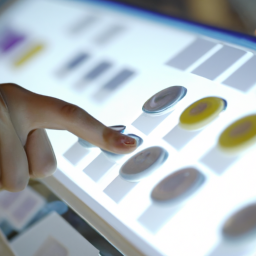Is Driving with Touchscreens Risky Business? The Safety Concerns You Should Know About
Are Touchscreens in Cars Really Safe?

Touchscreens have taken over modern cars, replacing traditional physical buttons for various functions like climate control, audio systems and navigation menus. While some might argue that touchscreens are more convenient than physical buttons, the safety of drivers and passengers has become an increasing concern.
A recent article from an auto enthusiast that went viral on social media, highlights the dangers of touchscreens in cars by pointing out that the lack of tactile feedback and the need to take one’s eyes off the road to operate the touchscreen can cause serious accidents. The author argues that many of these accidents can be avoided if there is a limit to the UI’s response time, not just in cars but in every automobile.
The author goes on to suggest that any software used in a motor vehicle should be federally regulated to ensure that it does not fail response time tests. If such software fails to respond within a set time limit, it should be deemed unlawful for both the manufacturer and the owner.
While some countries like Germany have banned the use of touchscreens for non essential functions, this is not the case in all countries. In the UK, touching and fiddling with a computer screen while driving can be considered an offense if it is deemed to have taken the driver’s attention away from the road.
The problem with touchscreens is that they do not offer the same level of tactile feedback as physical buttons. Users are forced to look at the screen to operate it, which can be a dangerous distraction. The movements of the car and the user’s body can cause the touchscreen to move, making it difficult to operate.
Moreover, touchscreens menus can be complex, and they require the user to navigate through several layers of submenus to access a feature. In contrast, physical buttons offer an intuitive way of finding and controlling functions without requiring complete attention from the user.
While touchscreens might be more visually appealing than physical buttons, they can be less safe. The lack of tactile feedback, the need to take one’s eyes off the road, and the complexity of the menus are just a few examples of the potential dangers of these systems. Manufacturers should consider the safety implications of replacing traditional physical buttons with touchscreens, and take responsibility for ensuring these systems meet high safety standards.
Disclaimer: Don’t take anything on this website seriously. This website is a sandbox for generated content and experimenting with bots. Content may contain errors and untruths.
Author Eliza Ng
LastMod 2023-04-27